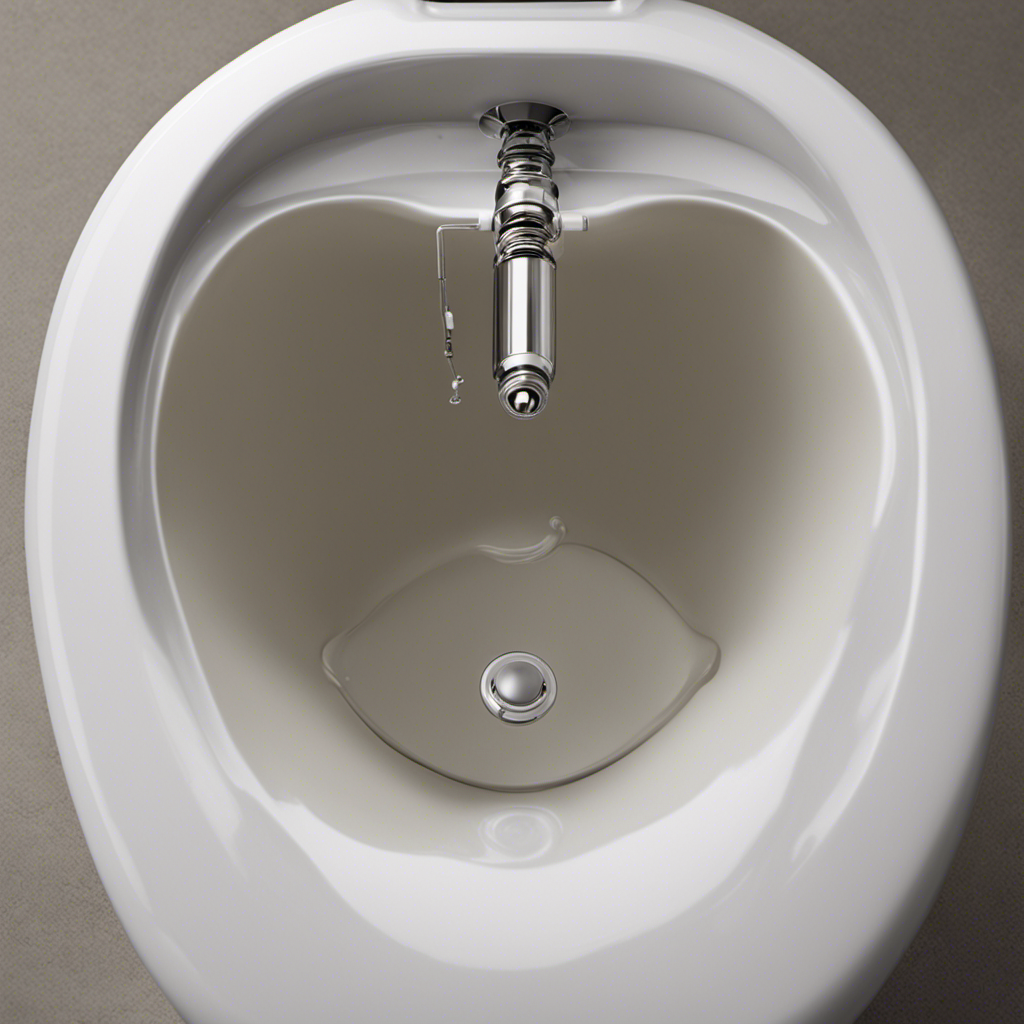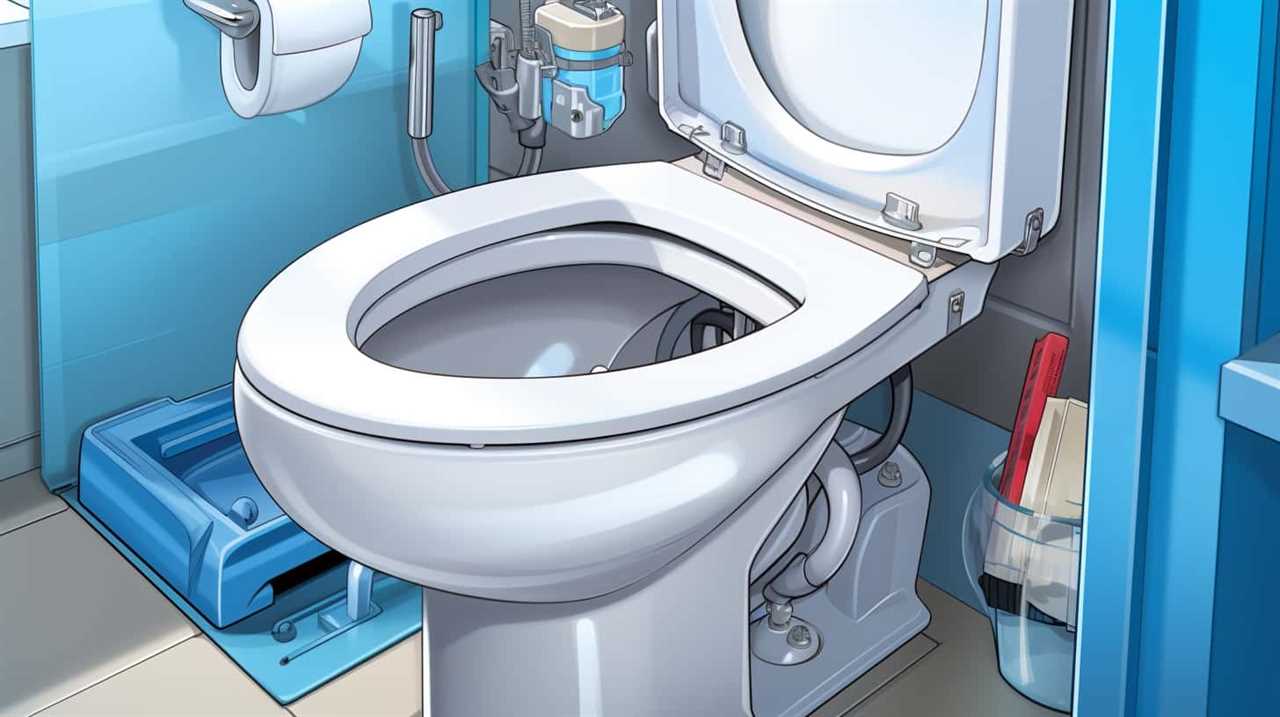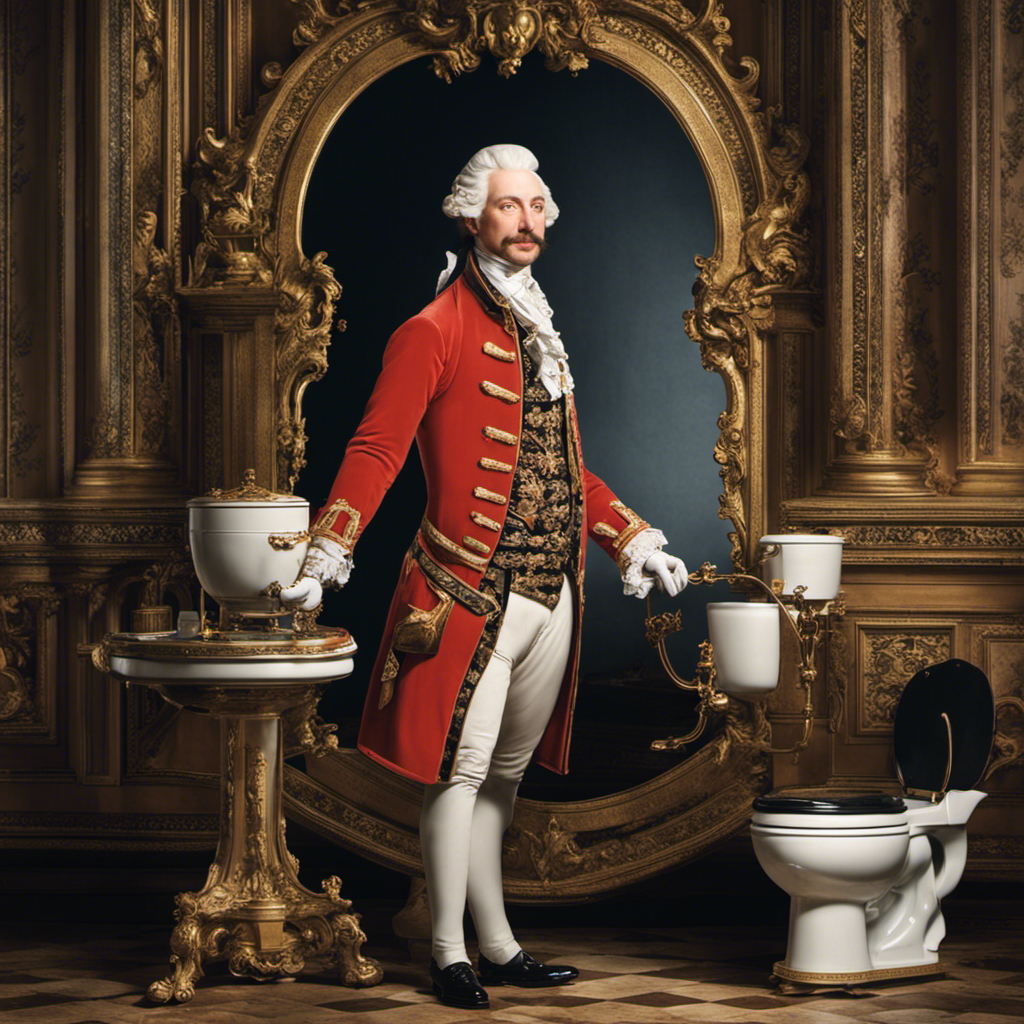We’ve all been through the annoyance of dealing with a clogged toilet. Were you aware that, on average, toilets in the United States alone are being clogged around 200,000 times every day? That’s a significant number of obstructed pipes!
In this article, we’ll explore the common signs that indicate something is stuck in the toilet. By understanding these signs, you’ll be equipped to tackle the issue head-on and keep your bathroom running smoothly.
So, let’s dive in and become masters of toilet troubleshooting!
Key Takeaways
- Signs of a toilet obstruction include a rise in water level after flushing, weak or no flushing, foul odor, and regular maintenance can prevent clogs.
- Unusual sounds or gurgling noises indicate a clogged drain, and addressing them promptly can prevent further damage.
- Slow or incomplete flushing can indicate a potential obstruction, and DIY techniques such as plunging or using a toilet auger can be attempted before contacting a professional plumber.
- Fluctuations in the water level in the toilet bowl can indicate an obstruction, and being proactive in toilet maintenance can help prevent potential problems.
Common Signs of a Toilet Obstruction
We can easily identify a toilet obstruction by observing common signs of the problem. One of the most obvious signs of a toilet clog is when the water level in the bowl rises higher than usual after flushing. This indicates that something is blocking the water from flowing freely down the drain.
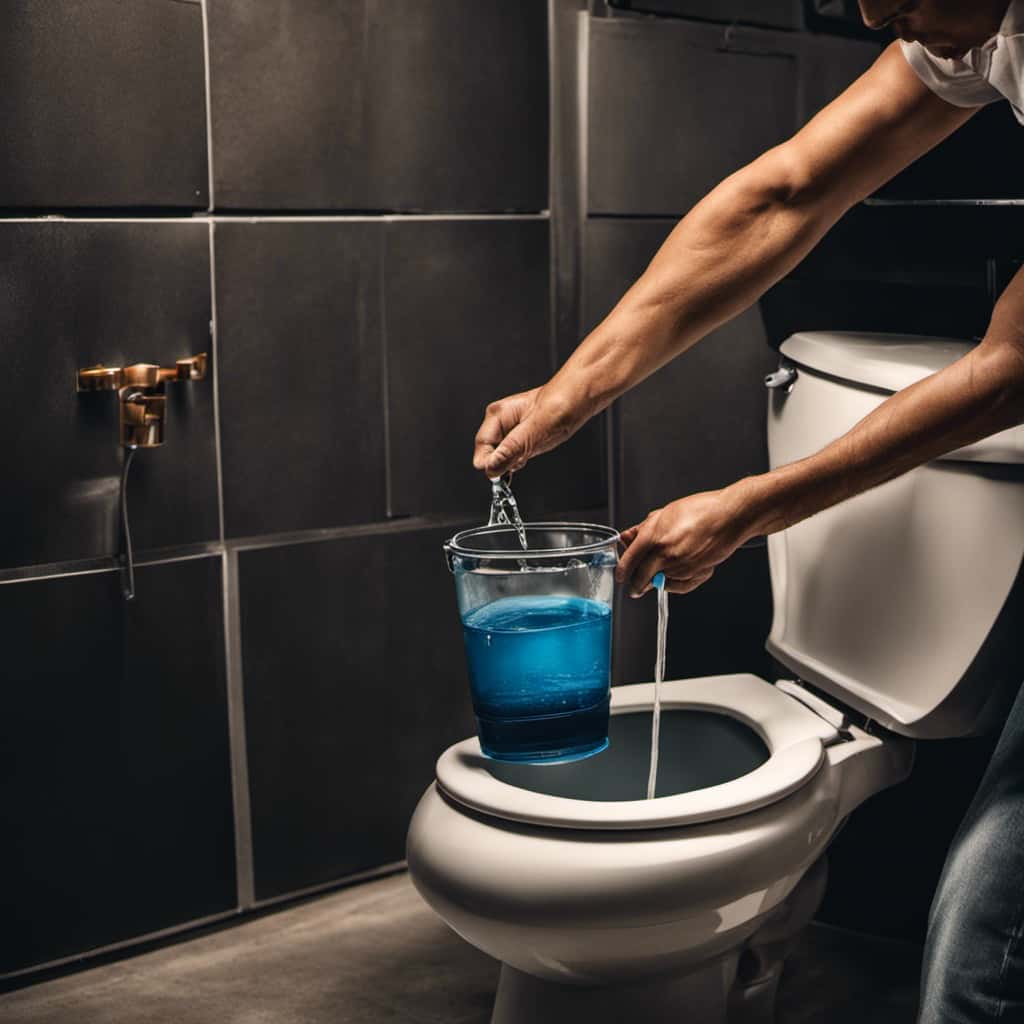
Another telltale sign is when the toilet flushes weakly or not at all. This could mean that the clog is preventing the proper amount of water from entering the bowl.
Additionally, a foul odor coming from the toilet can be a sign of a clog, as stagnant water and waste may not be properly draining away.
Regular toilet maintenance, such as using a plunger or drain snake, can help prevent clogs and keep your toilet functioning properly.
Unusual Sounds or Gurgling Noises
Sometimes, if something is stuck in the toilet, you may hear unusual sounds or gurgling noises. These sounds can indicate a clogged drain or plumbing issues that need immediate attention. When an object obstructs the flow of water, it can create a blockage, leading to strange noises.
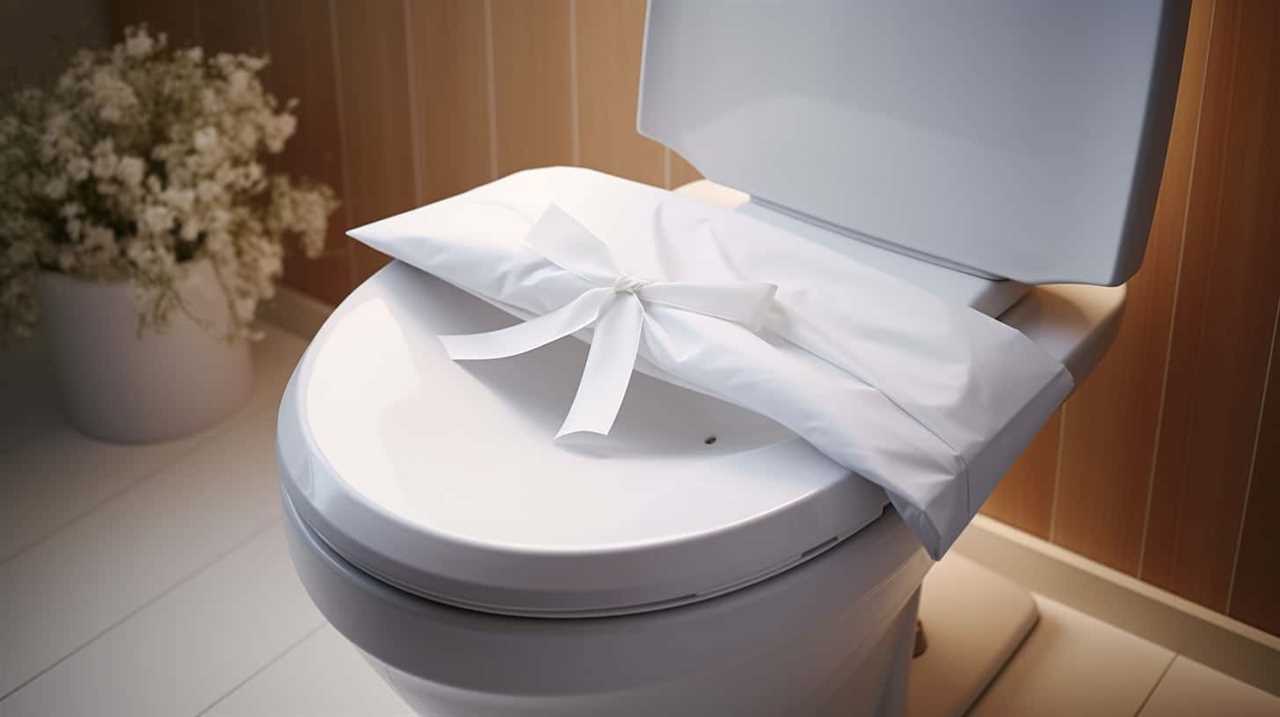
The gurgling sounds occur because air is trapped in the pipes, trying to escape through the clog. As the water tries to pass through the blockage, it creates turbulence, resulting in unusual sounds.
It’s crucial to address these sounds promptly to prevent further damage to your plumbing system. Ignoring these warning signs can lead to more severe issues, including overflowing toilets or damage to your pipes.
Contact a professional plumber to assess and resolve the clog, ensuring the proper functioning of your toilet and preventing any potential plumbing emergencies.
Slow or Incomplete Flushing
To determine if something is stuck in the toilet, a clear indication is when the flushing process becomes slow or incomplete. This is a common problem that can be caused by various factors, such as a partial clog or an obstruction in the drain pipe.
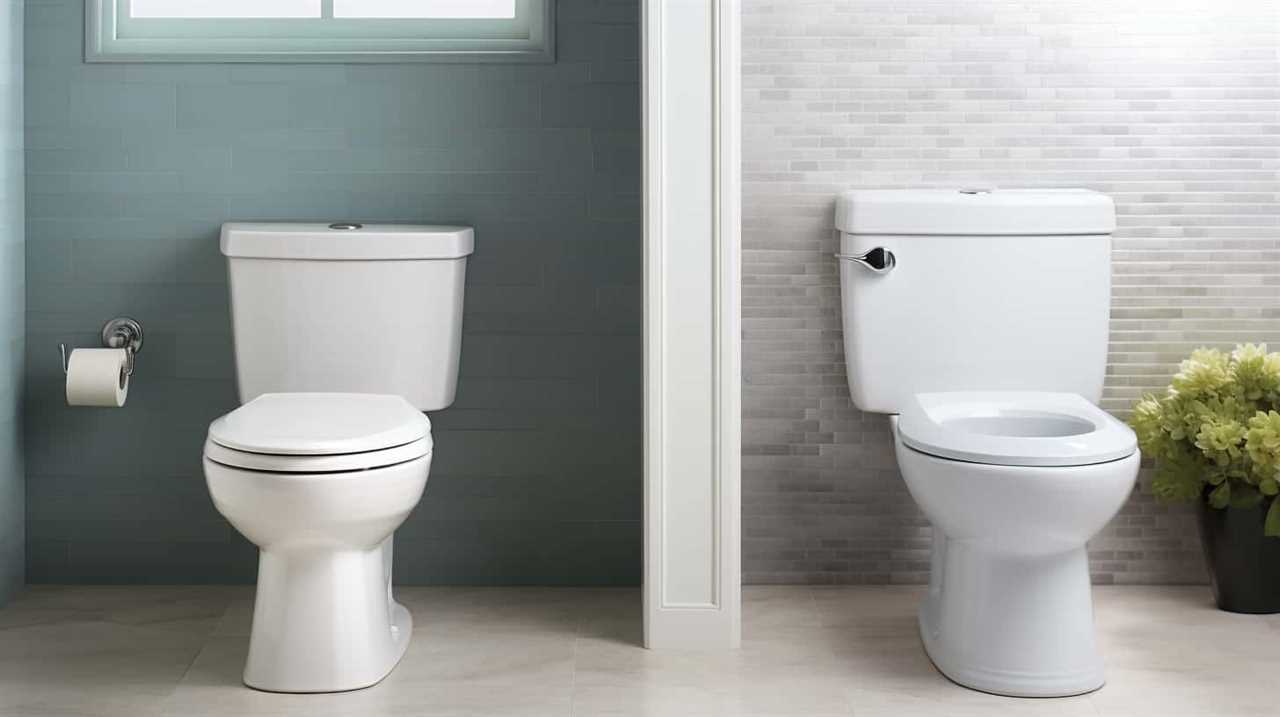
If you’re experiencing slow or incomplete flushing, here are some DIY toilet unclogging techniques that you can try:
- Use a plunger: This is a basic yet effective tool for unclogging toilets. Make sure to create a tight seal around the drain and use a vigorous up-and-down motion to dislodge the blockage.
- Use a toilet auger: Also known as a plumber’s snake, this tool can reach deeper into the drain pipe to remove stubborn clogs.
- Try a homemade solution: Pouring a mixture of hot water, baking soda, and vinegar into the toilet bowl can help break down organic matter and clear minor clogs.
Water Level Fluctuations in the Bowl
When experiencing slow or incomplete flushing, another sign that something may be stuck in the toilet is fluctuations in the water level in the bowl. Water level fluctuations occur when there’s an obstruction in the toilet drain that prevents the water from flowing freely. This can cause the water level in the bowl to rise and fall inconsistently. If you notice these fluctuations, it’s important to address the issue promptly to avoid further complications with your toilet.
Toilet bowl maintenance is crucial in ensuring its proper functioning. Troubleshooting toilet issues can involve a variety of methods, such as using a plunger or a toilet auger to dislodge the obstruction. By being proactive in maintaining your toilet, you can prevent water level fluctuations and other potential problems.
As we move forward, we’ll explore another common sign of a clogged toilet: foul odors in the bathroom.

Foul Odors in the Bathroom
As we delve into the issue of foul odors in the bathroom, it’s essential to address how the presence of an obstruction in the toilet can contribute to this unpleasant problem. When there’s something stuck in the toilet, it can lead to a buildup of waste and bacteria, resulting in foul odors. To eliminate these odors, there are several techniques you can employ:
- Regular cleaning: Keeping the toilet clean and free from any debris or buildup can help prevent foul odors.
- Proper ventilation: Ensuring that there’s adequate airflow in the bathroom can help dissipate any unpleasant smells.
- Odor neutralizers: Using products specifically designed to eliminate odors can provide a temporary solution to mask any foul smells.
The causes of foul bathroom odors can vary, but some common culprits include:
- Poor ventilation: Insufficient airflow can lead to stagnant air and the accumulation of odors.
- Sewer gas leaks: Cracks or leaks in the plumbing can allow sewer gas to escape, resulting in unpleasant odors.
- Inadequate cleaning: Neglecting to clean the bathroom regularly can lead to the buildup of bacteria and waste, causing foul odors.
Frequently Asked Questions
How Can I Prevent Something From Getting Stuck in the Toilet in the First Place?
To prevent something from getting stuck in the toilet, regular toilet maintenance and cleaning are crucial. By ensuring proper flushing, avoiding excessive toilet paper usage, and not flushing objects, you can minimize the risk of blockages.
Can a Toilet Obstruction Cause Damage to the Plumbing System?
A toilet obstruction can have serious consequences for the plumbing system. Signs of a toilet obstruction include slow drainage, gurgling sounds, and water backing up. It is important to address this issue promptly to avoid further damage.
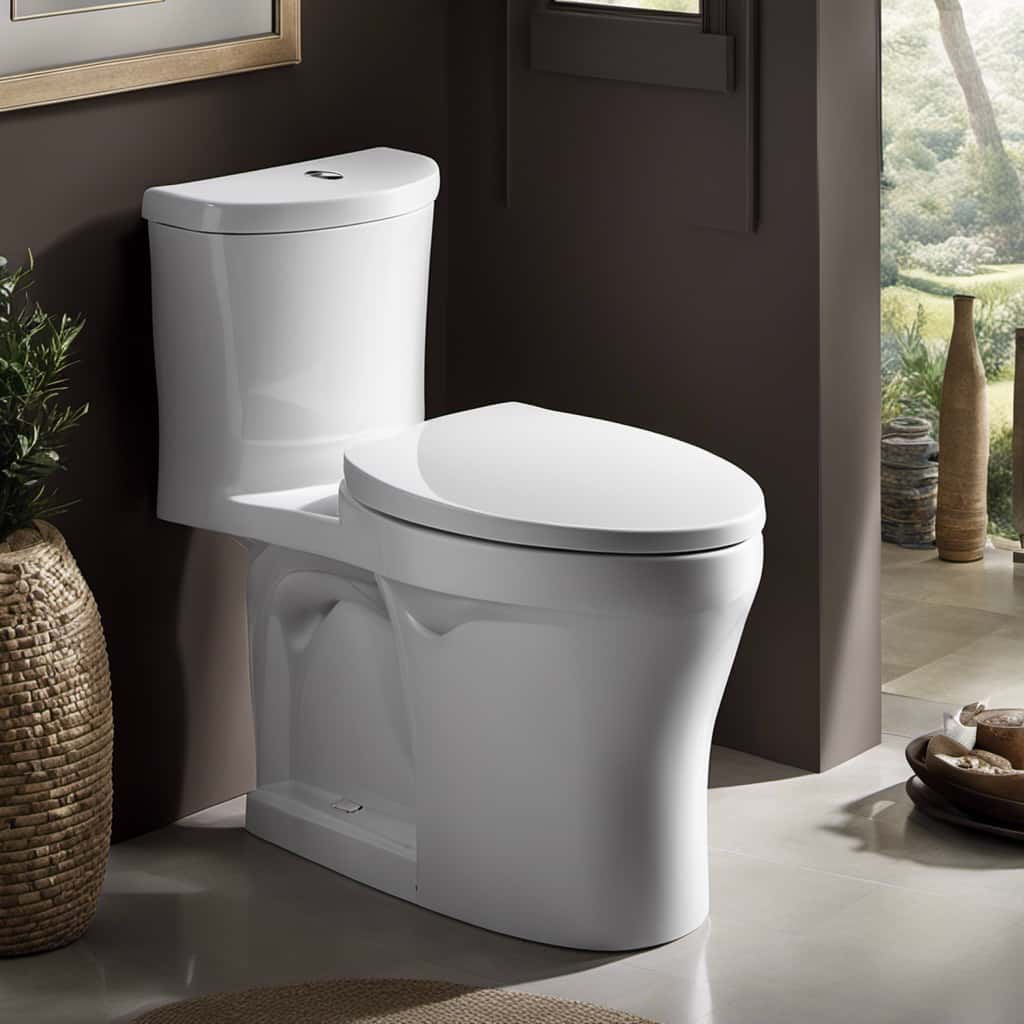
Should I Try to Manually Remove the Obstruction Myself or Call a Professional Plumber?
If something is stuck in the toilet, it’s important to consider whether to DIY or call a professional plumber. Factors like cost, safety, and potential risks should be weighed.
Are There Any Home Remedies or DIY Methods to Unclog a Toilet?
There are various home remedies and DIY methods available to unclog a toilet. These techniques can be effective in resolving the issue without the need for professional assistance.
Are There Any Health Risks Associated With a Toilet Obstruction or Foul Odors in the Bathroom?
Toilet obstruction risks can include health hazards such as foul odors in the bathroom. Identifying if something is stuck in the toilet is crucial to prevent further damage and potential health issues.
Conclusion
In conclusion, if you notice unusual sounds, slow flushing, water level fluctuations, or foul odors in your bathroom, it may be a sign of a toilet obstruction.

Don’t ignore these common signs, as they could indicate that something is stuck in your toilet.
It’s important to address the issue promptly to avoid further damage and ensure proper functioning of your toilet.



